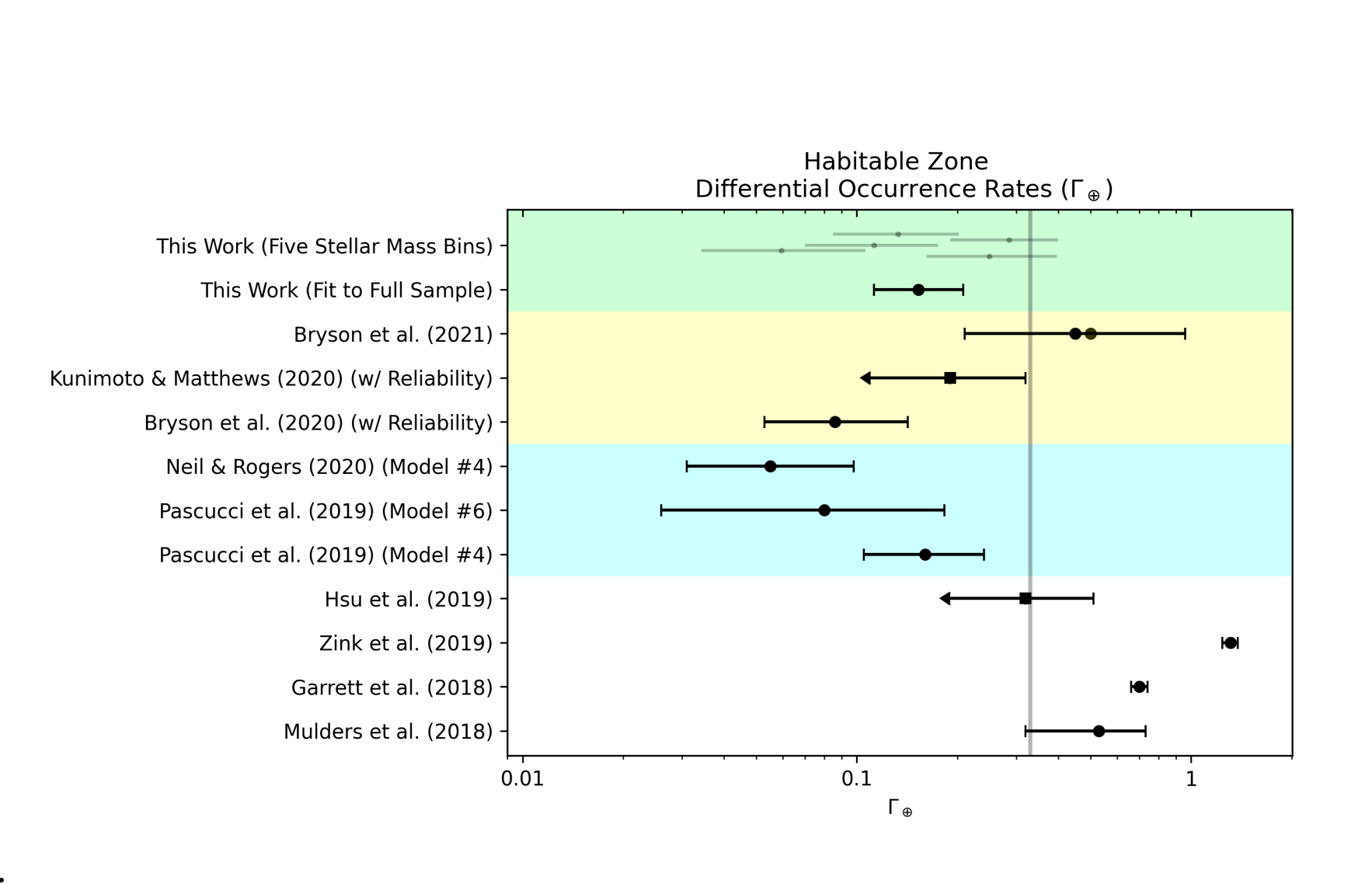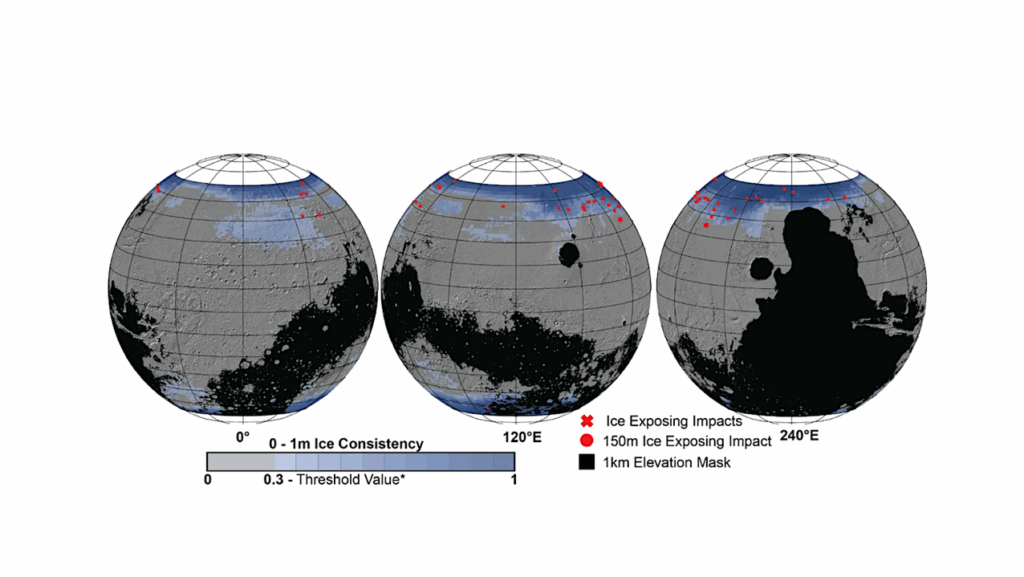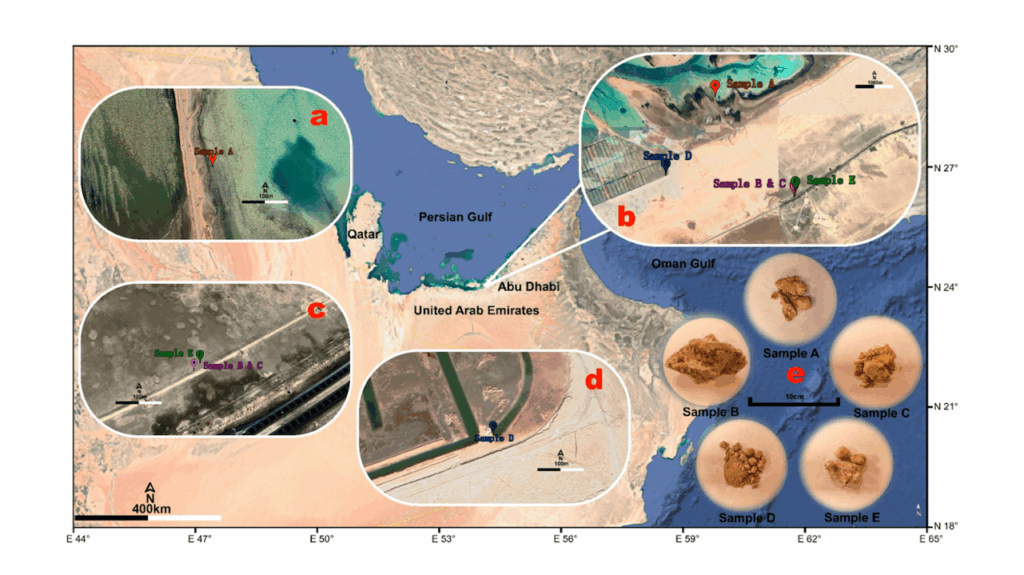The Demographics Of Kepler’s Earths And super-Earths Into The Habitable Zone

Understanding the occurrence of Earth-sized planets in the habitable zone of Sun-like stars is essential to the search for Earth analogues. Yet a lack of reliable Kepler detections for such planets has forced many estimates to be derived from the close-in (2<Porb<100 days) population, whose radii may have evolved differently under the effect of atmospheric mass loss mechanisms.
In this work, we compute the intrinsic occurrence rates of close-in super-Earths (∼1−2R⊕) and sub-Neptunes (∼2−3.5R⊕) for FGK stars (0.56−1.63M⊙) as a function of orbital period and find evidence of two regimes: where super-Earths are more abundant at short orbital periods, and where sub-Neptunes are more abundant at longer orbital periods. We fit a parametric model in five equally populated stellar mass bins and find that the orbital period of transition between these two regimes scales with stellar mass, like Ptrans∝M1.7±0.2∗.
These results suggest a population of former sub-Neptunes contaminating the population of Gyr-old close-in super-Earths, indicative of a population shaped by atmospheric loss. Using our model to constrain the long-period population of intrinsically rocky planets, we estimate an occurrence rate of Γ⊕=15+6−4% for Earth-sized habitable zone planets, and predict that sub-Neptunes may be ∼twice as common as super-Earths in the habitable zone (when normalized over the natural log orbital period and radius range used). Finally, we discuss our results in the context of future missions searching for habitable zone planets.
Galen J. Bergsten, Ilaria Pascucci, Gijs D. Mulders, Rachel B. Fernandes, Tommi T. Koskinen
Comments: 27 pages, 12 figures, 3 tables; Accepted for publication in AJ
Subjects: Earth and Planetary Astrophysics (astro-ph.EP)
Cite as: arXiv:2209.04047 [astro-ph.EP] (or arXiv:2209.04047v1 [astro-ph.EP] for this version)
Submission history
From: Galen Bergsten
[v1] Thu, 8 Sep 2022 22:07:54 UTC (6,043 KB)
https://arxiv.org/abs/2209.04047
Astrobiology








